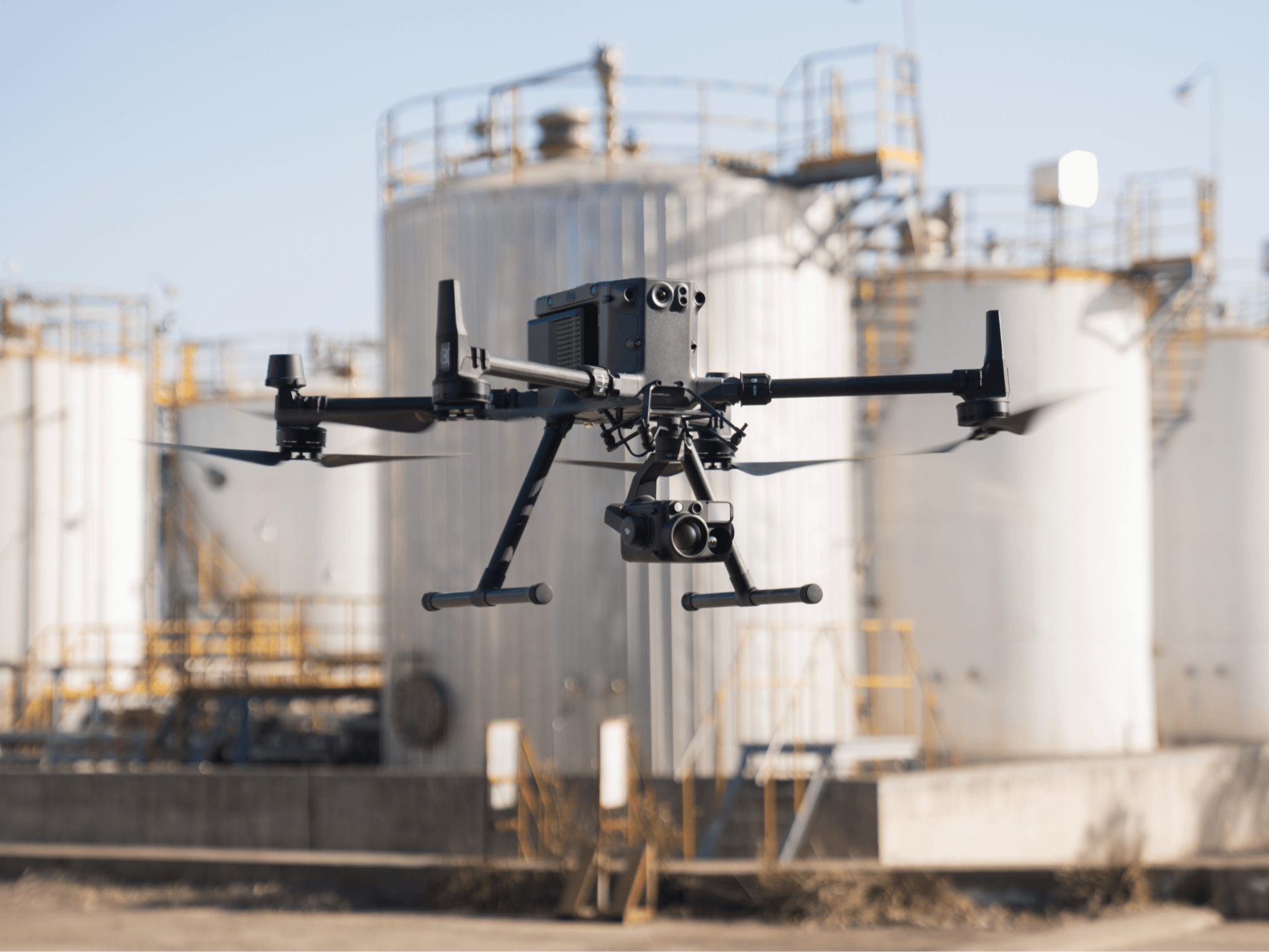Thermal Drone Inspections
Safety Enhanced by Thermal Drone Inspections
Enhancing Inspections with Thermal Drones
Drones have become crucial tools for inspection - collecting accurate data safely and quickly, resulting in huge cost savings, deeper insights, and more informed decision-making. Thermal drones take this a step further. These cameras not only feedback RGB data but infrared data, too, expanding the pool of data available to you.
Thermal images help identify temperature variations that indicate energy inefficiencies, structural defects, or potential hazards. This technology allows inspectors to assess areas quickly and remotely, providing valuable data for maintenance, safety, and efficiency improvements.
These capabilities enhance inspection accuracy and improve overall safety, maintenance planning, and energy efficiency assessments.

What Are The Benefits of a Thermal Drone Inspection?
Safety & Accessibility: Thermal drones eliminate the need for workers to physically access hazardous or hard-to-reach areas, reducing the risk of injury and minimising the requirement for PPE and additional support like ladders, scaffolding, or rope access.
Cost-Effectiveness: Cover large areas quickly, reducing labour costs and reducing or removing costly downtime. Save money by removing the need for scaffolding, cherry-pickers, or rope access.
Enhanced Detection: Unlike regular cameras, thermal cameras can detect issues such as water ingress points and areas susceptible to mould growth and can alert you of the issue in its early stages, allowing you to carry out preventative maintenance.
Comprehensive Site Mapping: Utilising thermal drones to map your construction site, building, etc enhances the detail you can achieve - as you identify heat signatures, revealing structural anomalies, energy inefficiencies, and potential hazards that traditional mapping may overlook, meaning your maps can enhance project planning and execution.

Industry Applications of Thermal Drone Inspections
Oil and Gas: Thermal drones with obstacle-avoidant features are particularly advantageous for this industry. They can safely fly in and out of tight spaces, detect heat signatures, and provide huge efficiency and resource savings compared to typical inspection methods such as ultrasonic testing and magnetic particle inspection.
Solar Panel Farm: Thermal drones can accurately detect manufacturing defects, such as cracks and faulty interconnectors, and identify temporary shadowing affecting solar panel performance. They do this much faster and safer than a person manually checking and can reduce the hours of manual labour to an hour.
Powerlines: Inspecting powerlines has traditionally been carried out by ground crews or low-flying helicopters, a costly and timely endeavour. With drones, it is faster, but the data you collect can be more detailed as you can zoom much closer in, and thermal cameras can be used to identify hot spots.
Building Management: A drone with a thermal camera is a powerful tool for utility and building inspections. Thermal cameras can spot missing or damaged installations, water under roof membranes, external electrical issues, failed windows, and many other problems.

Best Drones And Payloads For Thermal Inspections
DJI M350 RTK and H30T Combo: DJI's flagship enterprise drone has an IP55 rating, long endurance, and the ability to carry a range of payloads for mission versatility. The H30T has a resolution of 1280 x 1024. It also has wide and zoom cameras, and a laser rangefinder. The payload supports split-screen view, showing thermal and RGB side-by-side.

DJI Mavic 3 Thermal: This lightweight, compact, and versatile drone supports visual data collection, including hybrid zooming, and high-resolution thermal imaging. Equipped with a 4/3 20MP wide camera and a 12MP tele camera with 56x hybrid zoom and a flight time of 46 minutes.

DJI M30T: This high-performance DJI enterprise drone has an integrated payload, with 640 x 512 radiometric thermal sensor, as well as wide and zoom cameras, and laser rangefinder. It also has an IP55 weather rating, so it can operate even in harsh weather conditions like rain and snow.

Drone-in-a-box: The Future Of Automated Drone Inspections
The DJI Dock ecosystem enables remote and automated thermal inspections.
The drone in a box stays on-site and is ready to deploy on-demand, for scheduled routine inspections or for unplanned, emergency situations. Data is centralised and be viewed remotely via software such as DJI FlightHub 2.
DJI Dock 2 is a more compact version than the original DJI Dock. The M3TD for Dock 2 and DJI M30T for Dock 1 have a 640 x 512 px thermal imaging sensor.
The M3TD has longer flight time (50 minutes vs 40 minutes), while the M30T has a stronger visual sensor with enhanced zoom capabilities (200x hybrid zoom vs 56x hybrid zoom).

How heliguy™ Can Support Your Drone Inspection Workflows
Consultancy: Leverage the support of our experienced team to start and scale your operations. Obtain proof of concept and advice on the best equipment for your needs.
Hardware Supply and Support: Access a vast stock inventory, focused on but not limited to DJI solutions. Purchase equipment, or utilise the UK's largest drone rental fleet.
Training: Our in-house team of instructors has taught 4,500+ candidates. Obtain your permissions to fly, create robust standard operating procedures, and benefit from industry-specific training.
Drone Assistive Programme: Hybrid training programme, with instructor-led tuition on real-world assets to expand competency during complex asset inspections.
In-house Repairs: Crash support, fault diagnosis, and repairs by our UK-based DJI-trained technicians.